The need to be Cyber-resilient in the digital ecosystem

Many organizations see disaster recovery (RD) preparedness as an “insurance policy” and therefore an expense that is likely not to be amortised. This approach to disaster recovery is unsuitable for digital businesses. If RD tools and initiatives are seen as a business expense rather than an investment, it will expose an organization’s digital and cloud transformation initiatives to a higher failurerate.
Digital businesses depend on data to operate and differentiate theself from the competition. Data must be efficiently collected, retained and analyzed to reach its full potential in the business. Therefore, digital enterprises should be prepared to manage and mitigate any event where there is a possibility of corrupted or lost data. Examples include, but are not limited to, malware or ransomware attacks and failures due to migrations and modernization of applications or data centers.
The three key principles of what is known as IT resiliency are: the ability to protect data during planned outages, react effectively to unplanned outages, and accelerate business initiatives data-oriented.
From a technology standpoint, IT’s resilience includes traditional disaster recovery and backup tools, and also incorporates advanced analytics and security capabilities needed for the success of any business in the 21st century.
Survival in the face of disasters
According to a survey conducted by IDC, it is estimated that 50% of the organizations could not survive a cyber-disaster. This is because many of the organizations that have their information hosted on servers are not adequately protected or do not have automated RD processes as part of documentation and planning.
The reasons for this are complex, but the main ones are cost, time and training. IDC’s “Worldwide Business Resilience Readiness Thought Leadership Survey” uncovered several metrics illustrating the impact of a cyber disaster on digital businesses and data loss and how organizations currently respond:
- 93% of respondents have experienced at least one technology-related trade disruption in the past two years.
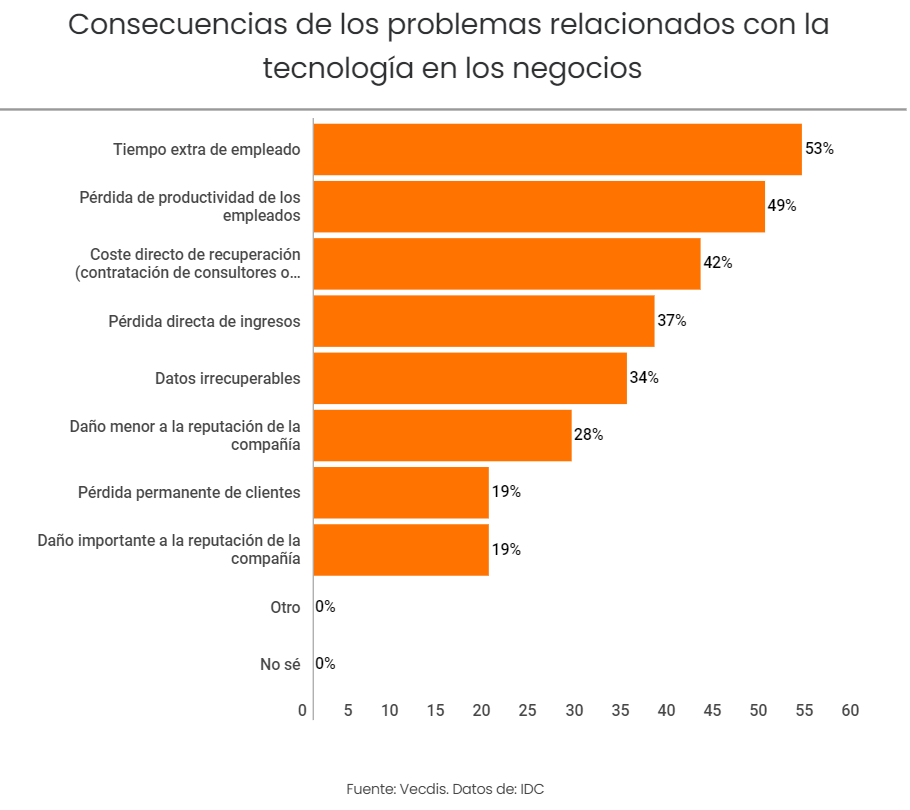
- 83.8% of respondents have experienced some form of commercial disruption in the past two years. To complicate matters further, companies face a number of disruptive factors beyond disasters. Many outages are due to new technologies, new products or services, disruptive competitors, or new business models.
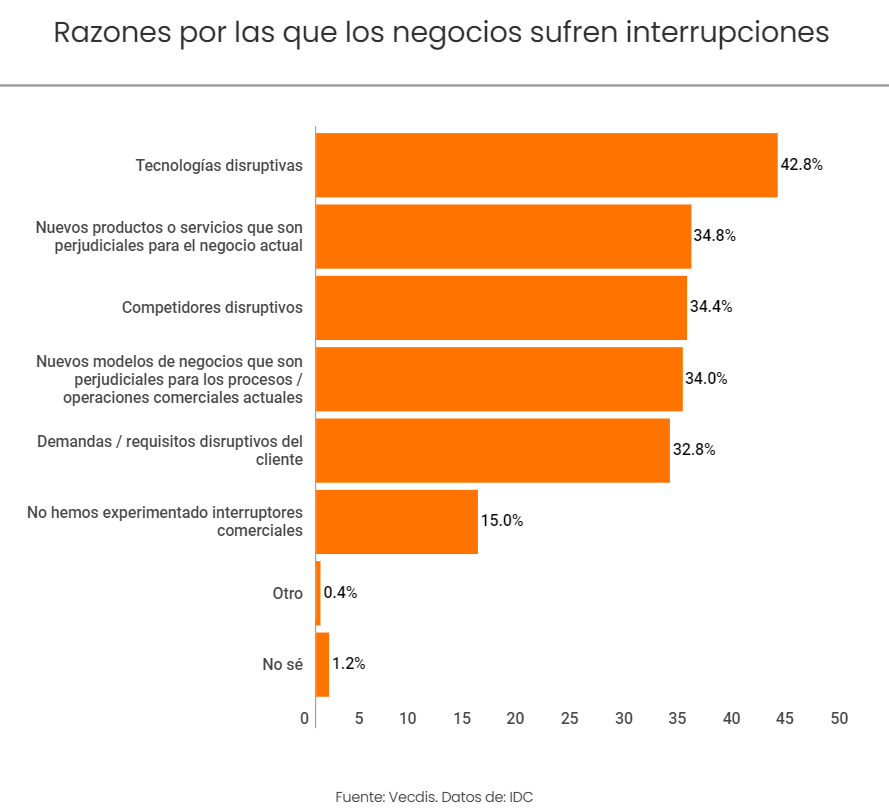
- 55.2% respondents believe their data protection requirements will become more complex in the coming years. Businesses will feel pressured to cost-effectively manage the complexity associated with data availability. More than half of the companies surveyed still manage their own internal RD schemes, without the help of third parties. However, internal administration is only intended to improve times and costs. Therefore, the gap between data availability capabilities and future needs cannot be ruled out, pushing IT organizations to seek third-party help or managed solutions in the cloud.
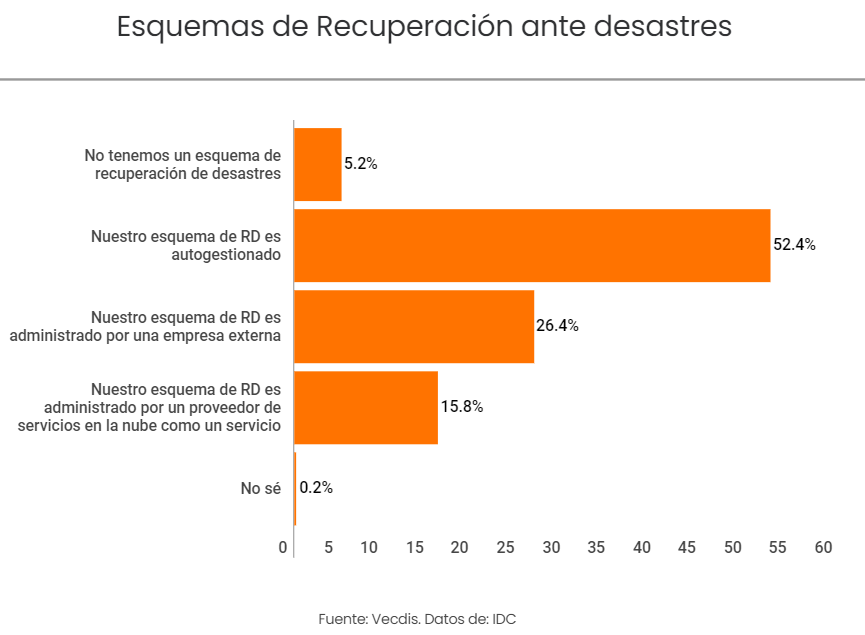
- Only 22% of companies are “data driven.” As a result of this relatively low rate, organizations are believed to continue to struggle to convey the value of data between businesses and IT leaders.
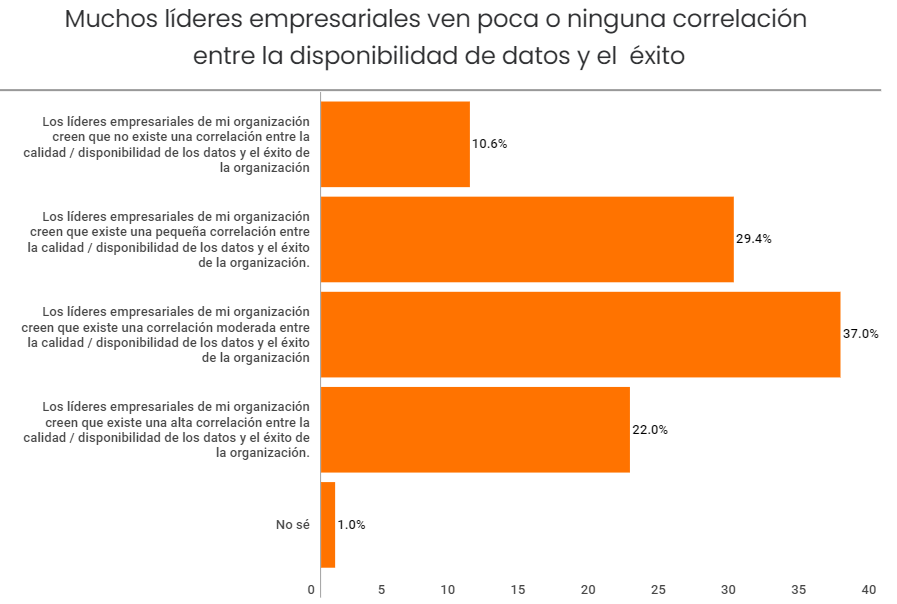
This data indicates that most organizations continue to face a wide variety of business-related disruptions, making them have to work to improve data protection and recovery from disasters, while passing on the value of this work to your organization’s business leaders.
The complexity of this task requires a rethink of what it means for an organization to protect and recover business-critical data in a climate where transactions, intellectual property, and the nature of business are increasingly digital. By leveraging IT resilience, organizations can efficiently define these requirements, measure resilience maturity, and create a roadmap for implementing data availability, tools, and services that ensure the success of the digital business.
The importance of resilience in digital commerce
Over the past 50 years, the average lifespan of companies has fallen from an average of 60 years to 18 years. To survive, businesses must start a path to digital transformation while managing the data required for new business initiatives.
IDC estimates that global spending on technologies needed for digital transformation will expand to a CAGR of 17.9% by 2021, reaching more than $2.1 trillion.
This increase in digital transformation-based spending will drive adoption of the public cloud and multicloud storage along with on-premises systems to leverage massive amounts of enterprise-related data.
If organizations are not prepared to manage and protect this data resiliently, they will put the business at risk, and this risk manifests itself in two main ways:
- Short-term financial impact on an organization: The average cost of downtime is $250,000 per hour across all industries and organizational sizes. The long-term impact of this inactivity will impact an organization’s corporate reputation and customer feedback.
- Loss of competitive advantage: Measuring the power of an organization’s competitive advantage and how it fluctuates over time is a much more subjective exercise. However, most modern digital transformation initiatives are based on data availability, causing the value of business-related data to increase for the business. Without modern data protection solutions, many digital and IT transformation projects may not succeed, ultimately jeopardizing a company’s ability to compete.
In short, your organization’s data, whether it’s application-level data, machine-generated data, operational data, or customer data, stored in the cloud or on-premises, is the fuel for transformation technology Digital. Having a comprehensive IT resilience strategy that supports these initiatives should be considered essential to an organization’s success.
Resilience classification
So far, the definition of IT resilience and its relationship to information technologies, the cloud and the modern technology used for digital transformation has been established. However, the definition of IT resilience will be unique to each organization.
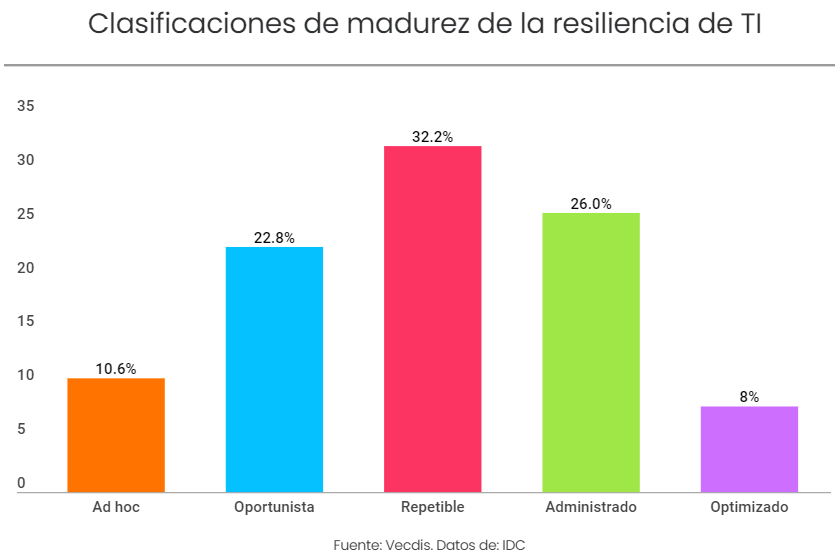
Actually, very few organizations have highly managed or optimized IT resiliency processes. However, this will change dramatically in the future, as 9.8% of respondents are expected to invest more in resiliency capabilities (e.g. backup, replication, RD, and cloud) over the next two years.
Increased budgets, coupled with the growing adoption of the cloud, will drive maturity and understanding of IT resilience across the business. However, organizational challenges can also make it difficult to mature IT resilience.
Five ways to become cyber-resilient
Organizations interested in innovative business models, building extended business ecosystems, and adopting more flexible workforce agreements, commas must find a safe way to do so. According to Accenture there are five keys that can help:
- Build a solid foundation: Identifying high-value assets and strengthening them. In addition to prioritizing legacy systems.
- Resistance to pressure testing as an attacker: Improve both attack and defense teams with players-trainers who use threat intelligence and communicate closely to provide an analysis of where they should improvements will be made.
- Employ innovative technologies, automate defenses: Using automated orchestration capabilities and advanced behavioral analysis.
- Proactivity in the face of threat hunting: development of strategic intelligence and tactics against threats. Control of abnormal and suspicious activity.
- Adaptation of the role of CISO: CISO technology experts and technology experts.
Conclusion
IT resilience remains an incipient concept for many organizations. The maturity model indicates that most organizations possess a certain level of IT recoverability, starting with tools for data protection, availability, and continuity.
Increasingly mature levels of IT resiliency depend on IT’s ability and business unit to coordinate recovery operations in a way that minimizes downtime and data loss.
Optimized IT resiliency models coordinate the people, processes, and technologies needed to eliminate data loss while delivering levels of data availability that can support data digital transformation.
The results indicate that most companies have not optimized their IT resilience strategy, evidenced by high IT levels and business-related disruptions. However, most companies say they will be embarking on a digital transformation project over the next two years. This illustrates the need for all organizations to start designing a plan for IT resilience that can ensure the success of these initiatives. Without that plan, the high prevalence of disruptive events, unplanned downtime, and data loss indicated by respondents will continue to put the cloud and transformation initiatives at risk of delay or failure, creating a financial burden and a negative impact on an organization’s competitive advantage.
A data protection strategy based on IT resilience enables organizations to simplify their needs around the people, processes, and technology needed to carry out transformation initiatives, and in addition to long-term success with minimal disruption to the business.


